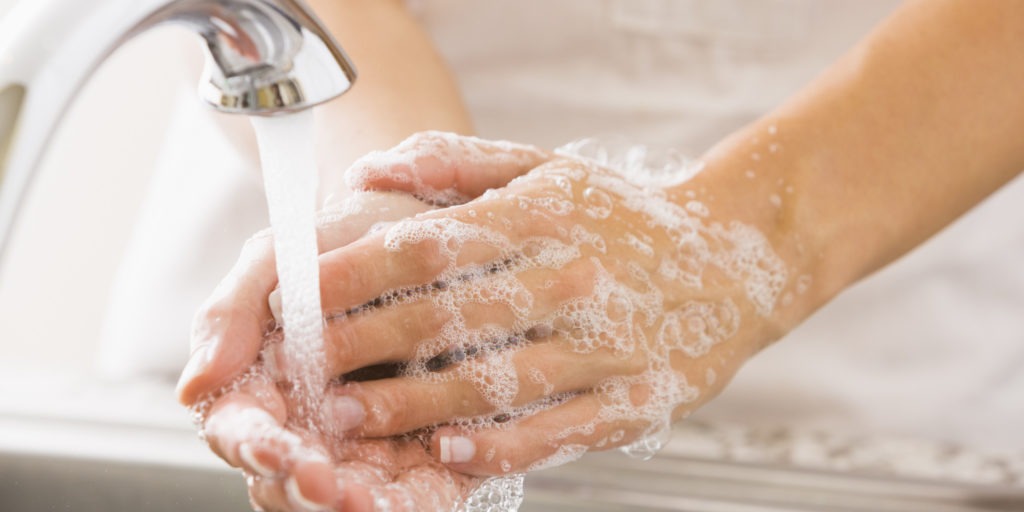
The power of proper hand washing
It’s no secret that proper hand washing is one of the simplest and most effective ways to prevent the spread of germs. The key word being “proper.” The way you wash your hands makes a big difference to how many germs remain when you’re done.
Follow these steps:
1. Wet your hands with clean, running water.
2. Apply soap.
3. Lather the soap all over your hands. Scrub your palms, the backs of your hands, between your fingers, and under your nails for at least 20 seconds. Singing “Happy Birthday” twice will help you keep time.
4. Rinse your hands well under clean, running water.
5. Dry your hands using a clean towel, paper towel, or an air dryer.
6. Use a paper towel to turn off the tap.
Alcohol-based hand sanitizer is a good alternative to hand washing, provided you use a generous pump, and rub it all over your hands. Ensure it has fully dried before touching anything.
See for yourself!
Want to see the difference proper hand washing makes? Just look!
Watch this video with medical microbiologist, Dr. Cheryl Main.
We tested handwashing techniques with a simple experiment in our Microbiology Lab at Hamilton General Hospital. We printed our fingers in petri dishes before hand washing, after poor hand washing, and after proper hand washing, then incubated them overnight to allow the bacteria to grow. The results were clear: poor hand washing leaves a large number of bacteria on the hands, while proper hand washing removes nearly all bacteria. Each of the dots you see represents thousands of tiny bacteria.
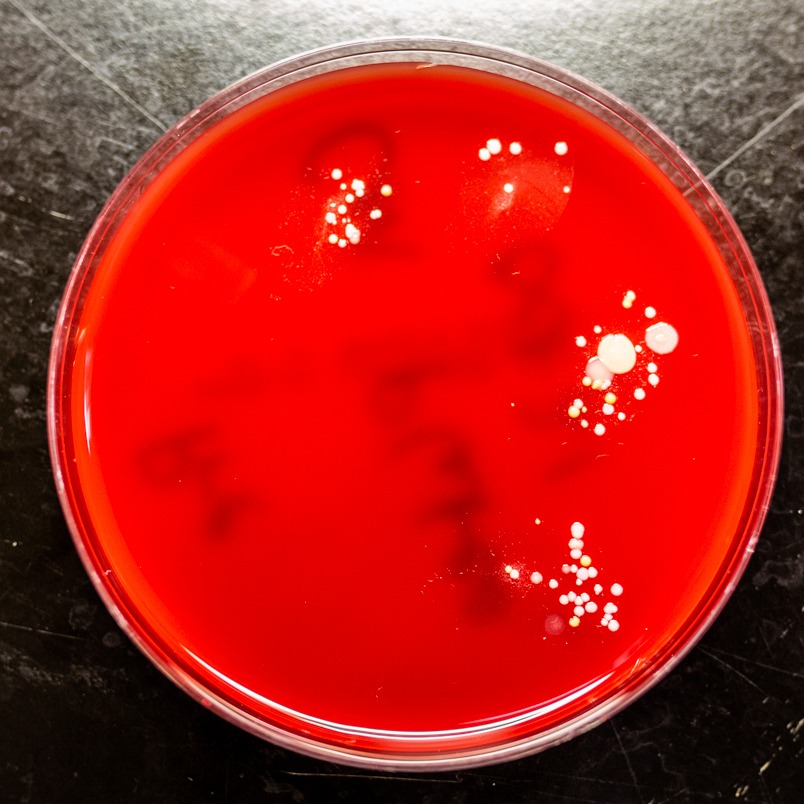
Bacteria growth after no hand washing at all
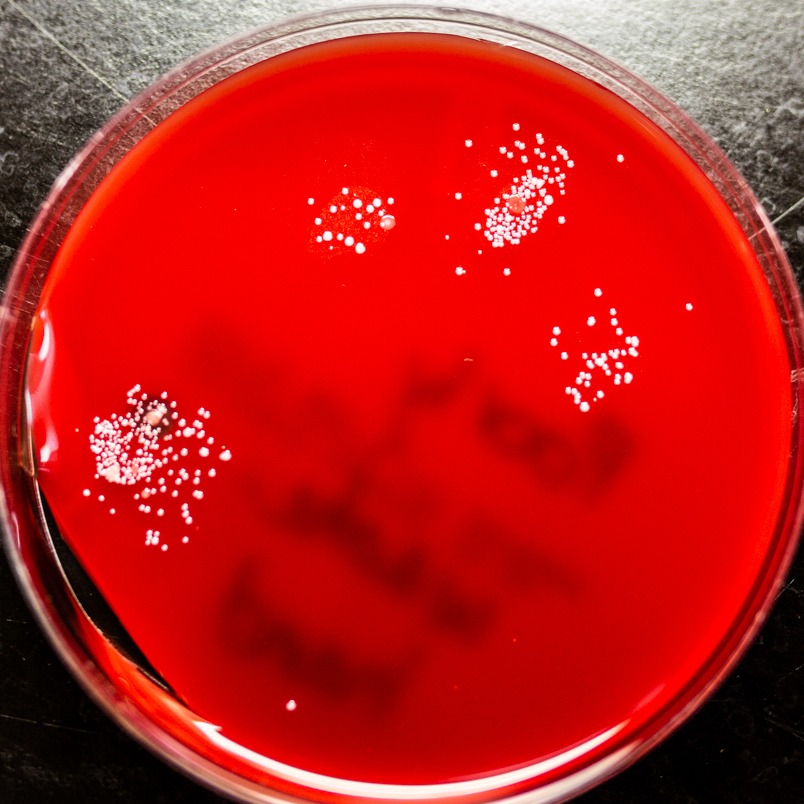
Bacteria growth after poor hand washing
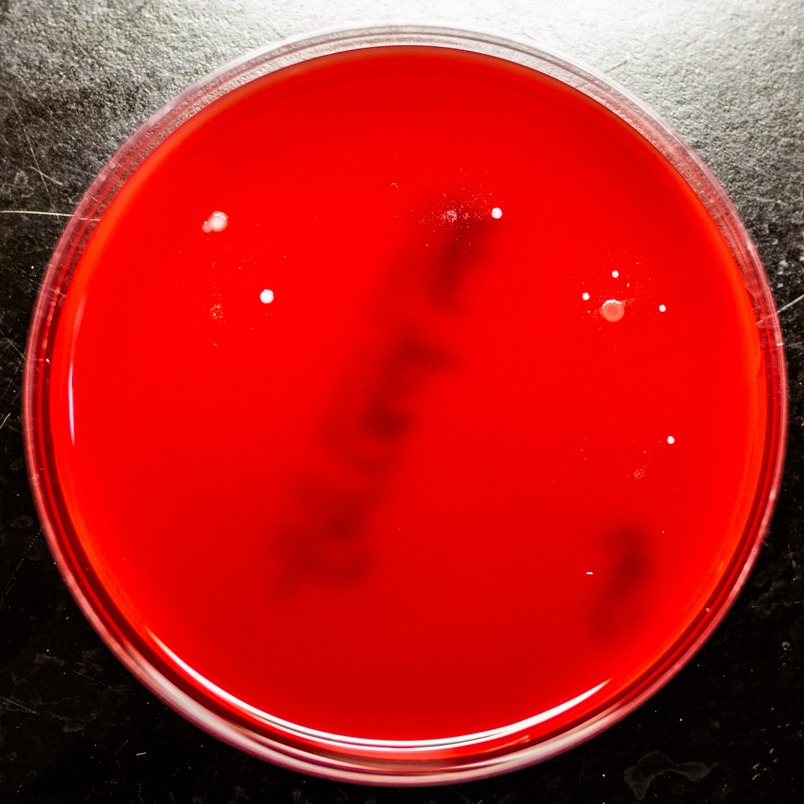
Bacteria growth after proper hand washing
To dry or not to dry?
Proper hand washing isn’t enough! You must also dry your hands thoroughly. We also tested well washed, but undried hands in our experiment, and here’s what we found. LOTS of bacteria. Bacteria love moist surfaces, so they thrive on wet hands.
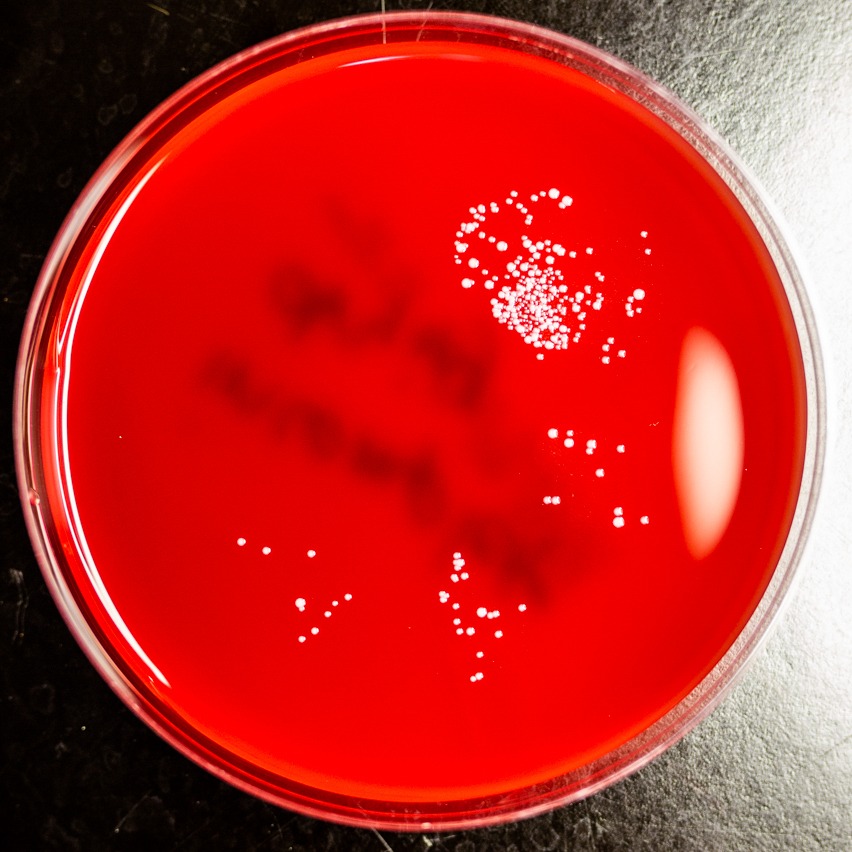
Bacteria growth after proper hand washing, but no drying
How do germs spread?
Germs spread through the air in sneezes, coughs, or even breaths. They can also be passed from person to person by touching each other or common objects and surfaces. That’s why proper hand washing is so important.
There are two main types of germs: bacteria and viruses. Both can cause illness. In our experiment, only bacteria are visible, because viruses can’t survive outside a living cell. They tend to exist in the same places, so the germs you see remaining in the petri dishes we showed represent both bacteria and viruses.
During cold and flu season, lots of these germs are passed around, particularly in places where people gather, like schools, offices, and shopping malls.
Here are some more ways you can prevent the spread of germs:
• Always sneeze or cough into your elbow.
• Wash your hands often with soap and water, especially after using the toilet.
• Avoid touching your eyes, nose and mouth.
• Stay home if you’re sick so you don’t bring germs to work or school.
• Clean and disinfect common surfaces and objects, including bathroom and kitchen counters and toys.
• Get all recommended vaccines, especially the flu vaccine every year.
As part of our experiment, we coughed into a petri dish to show just how many germs live in the spray that comes out of your mouth and nose. Eww!

Bacteria growth from a cough
The five second rule?
One last experiment, we promise! Have you heard about the five second rule? Or the ten second rule? Or depending who you ask, the thirty second rule? It doesn’t take long for germs to transfer from one surface to another.
We dropped a cracker on the floor for five seconds and then printed it on a petri dish. The results aren’t pretty!
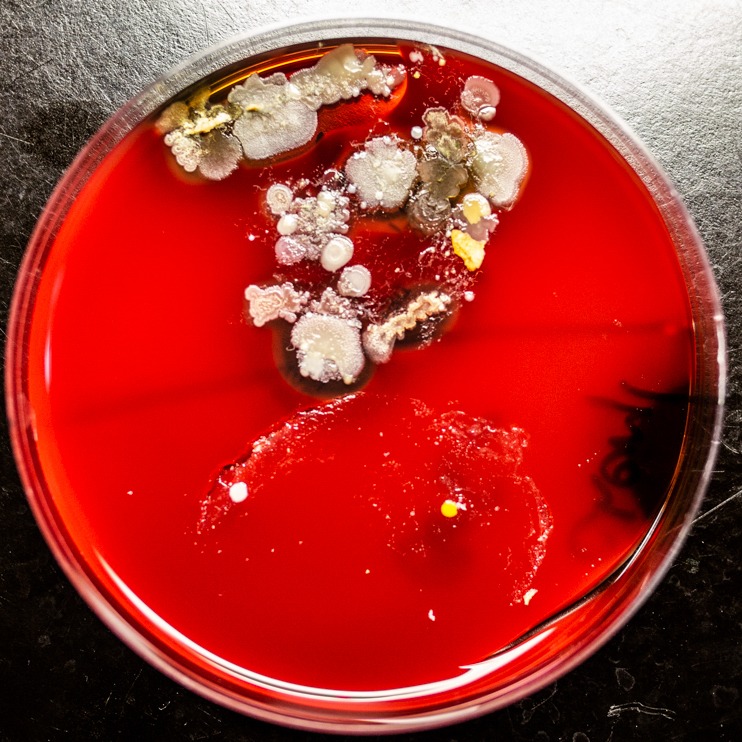
Bacteria growth from a cracker that was on the floor for ten seconds
Hand hygiene in the hospital
In Canada, one in nine patients will develop an infection during their hospital stay. Many of these infections can be easily prevented through proper hand hygiene in the hospital. While healthcare providers have a big role to play in helping to prevent the spread of germs to their patients, germs can also be spread by patients on their own hands.
At Hamilton Health Sciences, many teams have initiated hand washing promotion initiatives that encourage open communication between patient and caregiver around hand hygiene. The key message? That it’s okay to ask your healthcare provider if they’ve remembered to clean their hands. Don’t feel shy about reminding someone to wash their hands before coming into a patient room!
For visitors coming to the hospital, we recommend cleaning your hands at the stations on the way in, before entering the patient’s room, and again when you leave.
The 5 most important times to wash your hands in hospital
If you or a loved one is in hospital, it’s important for you to know the five most important times to wash your hands:
1. Before touching your eyes, nose, or mouth.
2. Before eating or handling food.
3. After coughing or sneezing (it’s best to cough into a tissue or your sleeve)
4. Before entering shared spaces and when returning to your/your loved one’s room.
5. After using the washroom or a commode.
The preferred method of hand hygiene in a health care setting is to use alcohol-based hand rub. It’s important to rub it in all areas: the backs of your hands, in between your fingers, your finger tips, your thumbs.
If your hands are visibly dirty, you should use soap and water. See the steps above for this method.
